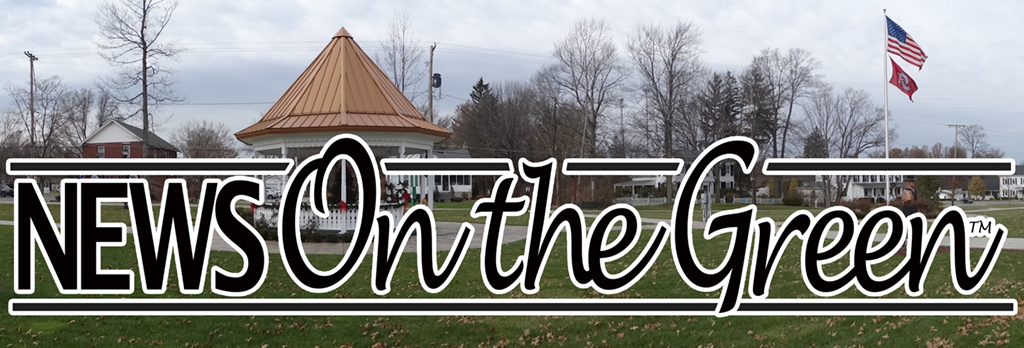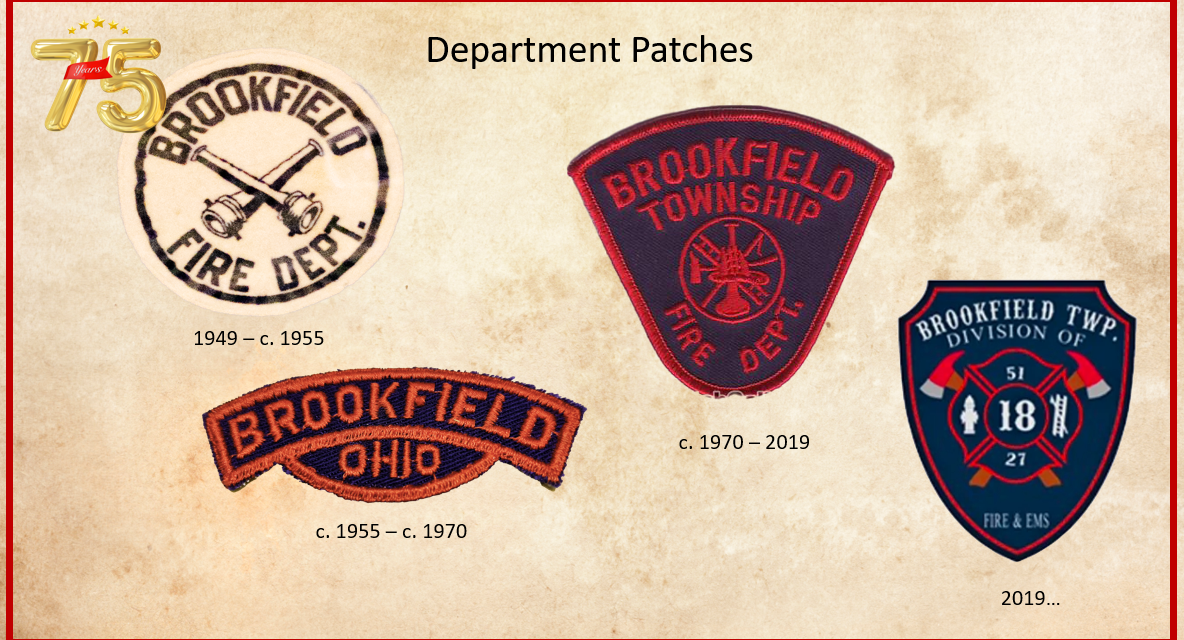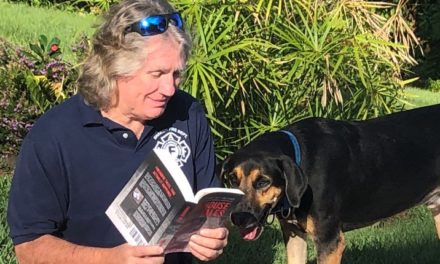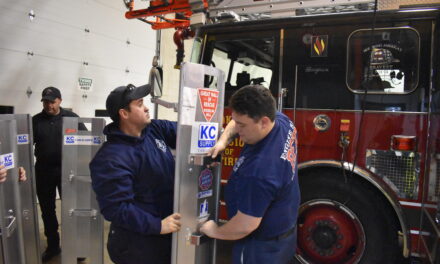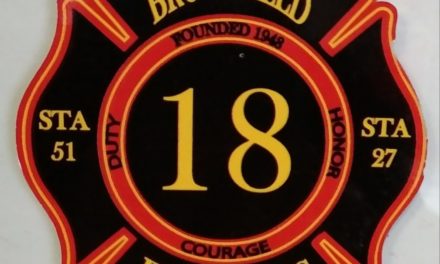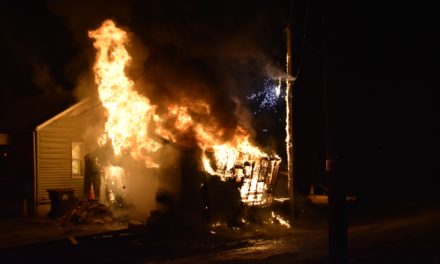Brookfield Township Fire Department marked its 75th anniversary this year, but the history of organized firefighting in the township goes back before 1948.
Local coal mining operations had fire protection units starting in about 1870, and local industries such as Masurite Powder Works and Standard Tank Car had their own employees dedicated to firefighting, according to historical records.
A fire brigade dedicated to serving a specific part of the township, the Slope Volunteer Fire Department is documented through a minutes book and other items at least as far back as 1935, said Gerard Zarella, a Masury resident and former Brookfield firefighter who researched the BTFD for a presentation Nov. 9 for the Brookfield Historical Society.
A lot of the names of people associated with Slope – the area around Stewart Sharon and Bedford roads – show up in the early records of the BTFD, Zarella said. In fact, BTFD’s first chief, Rhinold Schultz, had been the Slope chief, he said.
The BTFD traces its roots to a meeting of about 300 men of the township on April 5, 1948, at Brookfield High School, when they decided to form a volunteer fire department, Zarella said. The department had representation from the seven major neighborhoods in town, including Yankee Lake, which had become a village in 1934.
“That’s how they organized the fire department, so that they would have coverage in the whole township,” Zarella said.
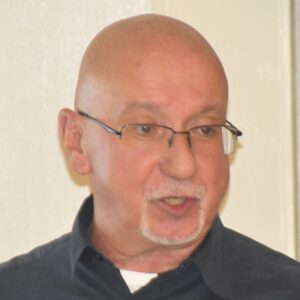
Gerard Zarella
The department applied for a charter in August 1948, and the charter was received on June 14, 1949.
The first truck, an International pumper, arrived in February 1949, and the men set about building a fire station on Grove Street, which also housed the township’s road department.
“A lot of the work was done by the firemen, by the volunteers, from the ground up,” Zarella said. “These guys that came out of the mills as welders and pipe fitters, they literally built this station.”
They also built many of their trucks, often taking an existing truck or bus, stripping it down and rebuilding it to suit their needs, he said.
The volunteer fire department had an active social arm that raised money for fire department equipment and operations through parties, dances and the annual summer festival called Homecoming, which started in 1949 and lasted into the early ’80s. A ladies’ auxiliary, mostly made up of wives and daughters of firefighters, supported the firefighters’ needs at scenes, and also played a role in the social activities. The auxiliary carries on today.
From the department’s earliest days, medical service was at least a part of the firefighters’ offerings. One of the departments’ first purchases was a resuscitator, a device that pumped oxygen into people who had stopped breathing, and it also bought a station wagon to carry medical supplies, Zarella said.
In its first year, the department responded to 60 calls. Last year, it responded to 2,131 calls.
In addition to fighting fires, the department responded to a number of other situations over the years, During the Blizzard of 1950, the department stayed open for three days to clear roads, deliver goods, services and people to those who needed them, transferred produce from local farms to grocery stores and repaired road department equipment, Zarella said.
In 1957, the department assisted law enforcement authorities in an 11-day manhunt for a triple murder suspect.
Schultz, who had been burned in a welding mishap at the station in 1953, resigned in 1954, and was replaced as chief by Jack Powell.
“He (Powell) really loved the department and put a lot of time and effort into this department,” Zarella said. “He oversaw the first great expansion and growth of the department.”
Powell became the first full-time fireman in 1965. He had the station manned five days a week and oversaw an expansion and renovation of the station, which was done by department members.
Nick Bartolin was appointed chief in 1974 and his tenure included the hiring of Terry Brannon, Keith Barrett and Bradley Davis as full-time firefighters, and the full-time manning of the station.
With volunteers now able to stay at the station because there was a full-time guy there, it wasn’t rare to see up to 10 guys manning the station on a given night, said Mike Hagood, who started with the department in the ’70s as a teenager and retired in 2020 as a captain.
Barrett, who also had started at the department as a teen, was named chief in 1981 and oversaw the moving of the main station from Grove Street to the former Maybrook Construction building on Route 7; the creation of a second station at Addison Road, Route 82 and Broadway Avenue; the inauguration of an emergency medical service with ambulance transport capabilities; and adding Hartford Township to its jurisdiction.
Zarella remembers some of the old timers from the department’s first days still hanging around when he started with the fire department in 1974 at age 16, and the changes in the department did not always sit well with them, he said.
“A lot of the older guys, they felt we were coming and pushing them out of the way,” Zarella said. “I don’t wanna say bad blood, but there was some friction there, as there always is with change. Change comes hard, especially in the fire service, because everybody’s so close and tied so tightly together.”
Zarella credited Barrett with being able to straddle the traditional aspects of the department with the need to change as demands for service, certification requirements and technology increased.
“Keith was more of a diplomat about things,” Zarella said.
Barrett retired in 2018 and was replaced by current Chief David Masirovits.
Zarella, who left the department in about 1990, added that guys of his era question whether the training that today’s firefighters receive is any better, especially when his fire training included setting a house on fire, something not allowed today.
“They do feel it’s a little bit of a detriment to the new firefighters coming up, because we got hands-on, taste-that-smoke, feel-that-fire training that some of the new guys just aren’t getting in this almost sterilized environment,” Zarella said. “Good, bad, things change.”
And, while things change, some things stay the same. Referring to the firefighters who serve Brookfield today, Zarella said, “I know they are just as dedicated to carrying on the rich tradition that we’ve had in this community. It goes all the way back to 1948 when a few guys got together and said, ‘Hey, we gotta form a fire department.’”

